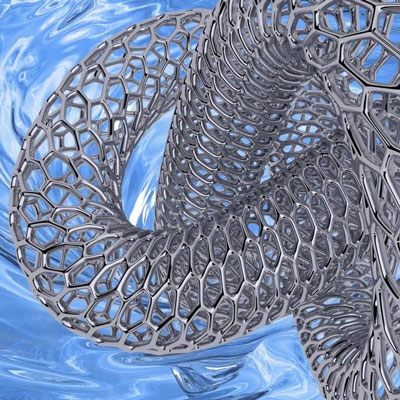
(Source: nanowerk)
Imagine that in the future, your e-newspapers can be rolled up freely. Even if you overturn the coffee and pour the water on it, it will not affect the update and reading of e-newspapers - of course, this is just a lot of what is considered to be in the future. One of the black technologies that emerged, it sounds really cool. However, to achieve this goal, a key technology needs to be solved. That is how to separate carbon nanotubes.
Recently, Alex Adronov's research team at McMaster in Canada invented a new purification technology that has cleared the way for the manufacture of carbon nanotubes.
As a one-dimensional nanomaterial, carbon nanotubes are lightweight, and the hexagonal structure is perfectly connected, which is a carbon structure similar to that of hair filaments. Its diameter is only one billionth of a meter and its length can reach several kilometers. It has many special mechanical, electrical and chemical properties.
Since the structure of carbon nanotubes is the same as that of graphite, it has good electrical properties and is also more heat-resistant. In addition, its toughness is extremely high, it is the material with the highest strength ratio that can be prepared at present, can bring the great improvement to the performance of the composite material. And, although similar to the structure of polymer materials, its structure is much more stable than polymer materials. The use of carbon nanotubes instead of silicon as a raw material allows the memory and the processor to be stacked in a three-dimensional manner, which reduces the time required for the data to be converted between the two, thereby greatly improving the processing speed of the computer chip.
In recent years, with the deepening of research on carbon nanotubes and nano-materials, its broad application prospects are constantly exhibited. This slim flexible material is considered to be able to replace silicon-based chips in computers or other electronic devices in the future.
However, scientists have always faced a problem in the preparation of carbon nanotubes. Carbon nanotubes have two kinds of microstructures, namely semiconductor-type carbon nanotubes and metal-type carbon nanotubes. During the preparation, both carbon nanotubes are mixed together. Although they are materials that need to be retained after preparation, they can only be used if they can be separated.

(Source: nanowerk)
In order to solve this problem, scientists have spent years researching and testing, but have only found a way to dissolve the semiconductor-type carbon nanotubes into polymers, so that only metal-type carbon nanocrystals can be obtained. Tubes, and methods for obtaining semiconducting carbon nanotubes have not been found.
Now, researchers have finally succeeded in reversing the electrical properties of polymers so that they can be stripped of metal tubes leaving only semiconducting tubes. The next step for the research team is to develop more efficient polymers that will make this process commercial.
“Once we have a stable technology that can be used to make clean carbon nanotubes, and the cost is not that expensive, then a lot of things on Earth will change rapidly.†Alex Adronov said that he is McMaster The university's chemistry expert, it is his team invented this technology with great potential benefits to purify carbon nanotubes.
At McMaster University, researchers are doing sophisticated research at the Electron Microscope Center. Experts are working closely together. They are all working hard to further purify carbon nanotubes. If this technology can be popularized, then a new type of chip-making material—more stable than silicon and more heat-resistant and faster carbon nanotubes will overturn the traditional computer structure design.
"In this world, there is very little place for people to carry out such interdisciplinary creative work," Adronov said. Next, his team will find a way to develop more effective polymers to expand the commercial production process of carbon nanotubes, and in the future, find more extensive use of carbon nanotubes.
Via nanowerk
Recommended reading:
With the carbon nanotubes, men in the toilet can enjoy it.
Although material selection is difficult, Google also wants to study space elevators.
Do you need to increase the unit capacity of the battery by ... origami?